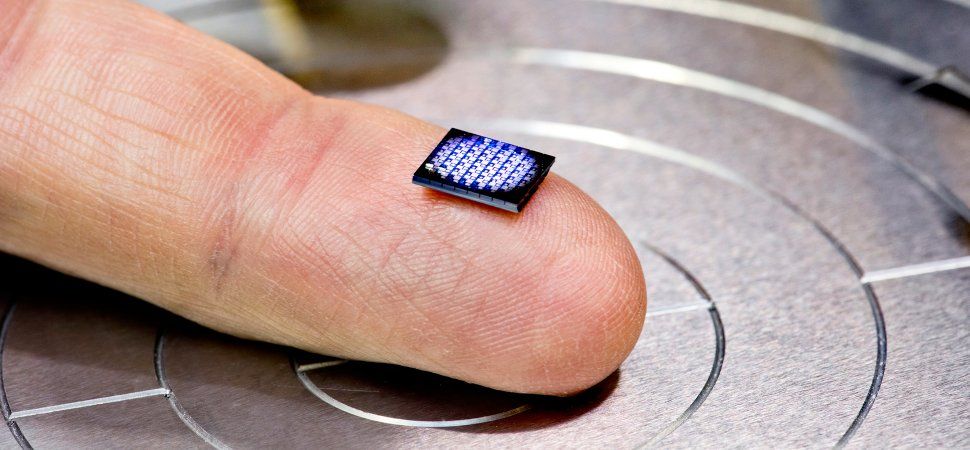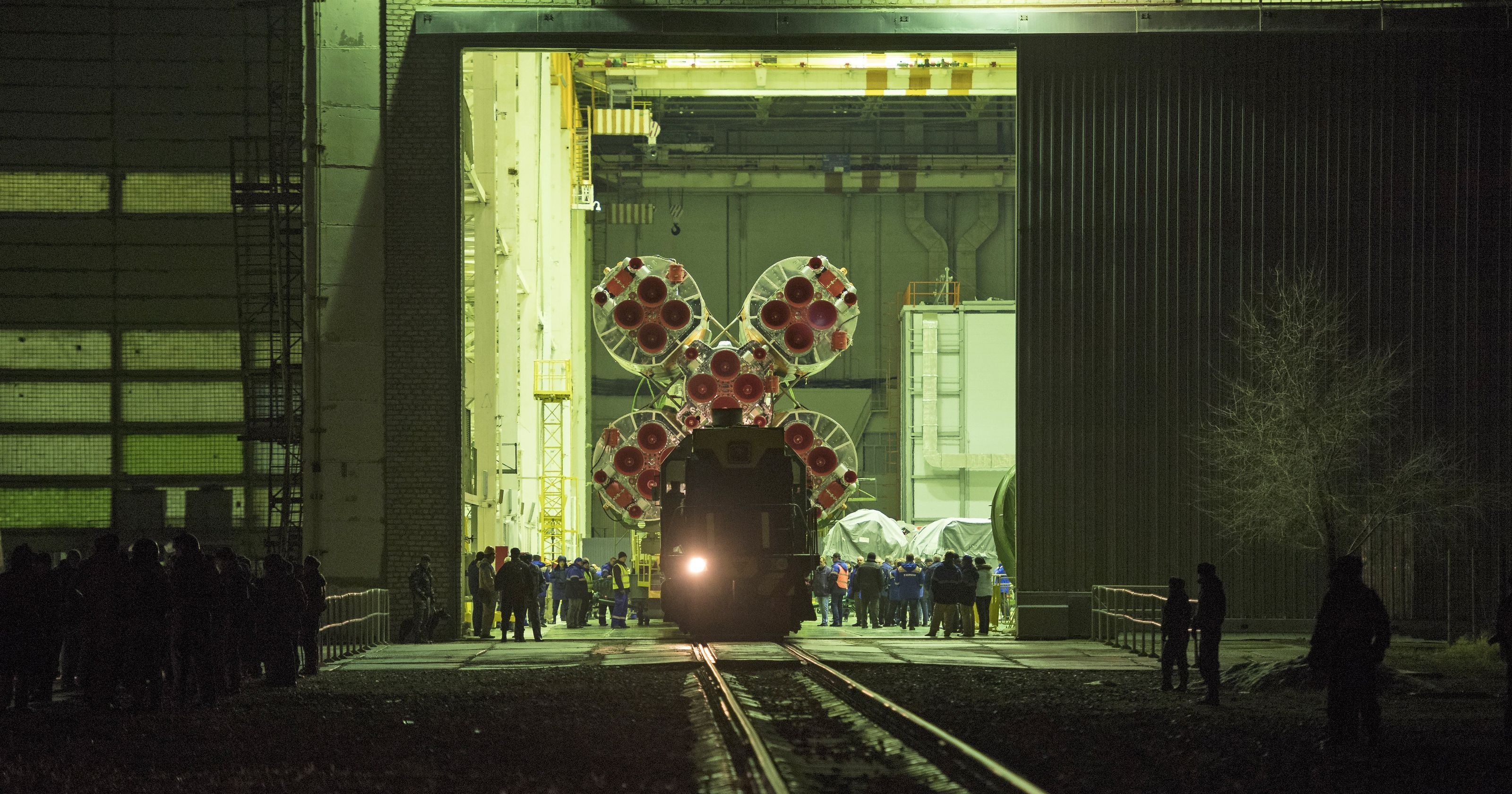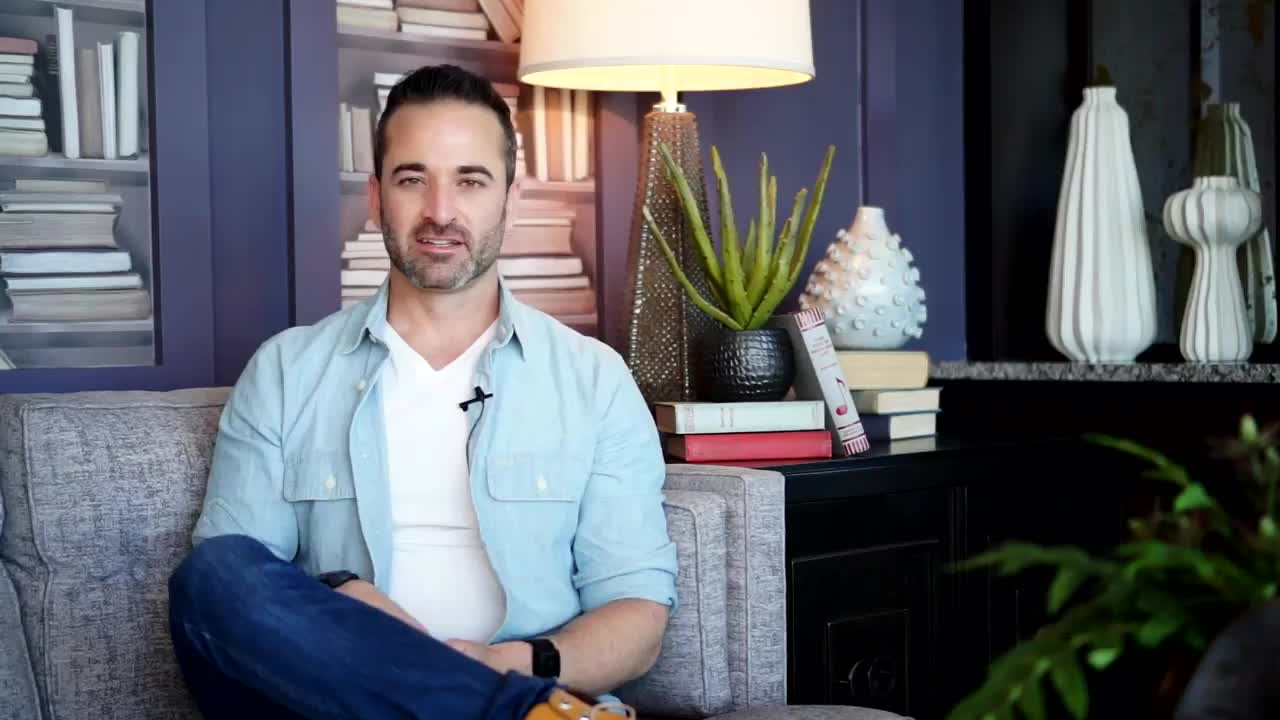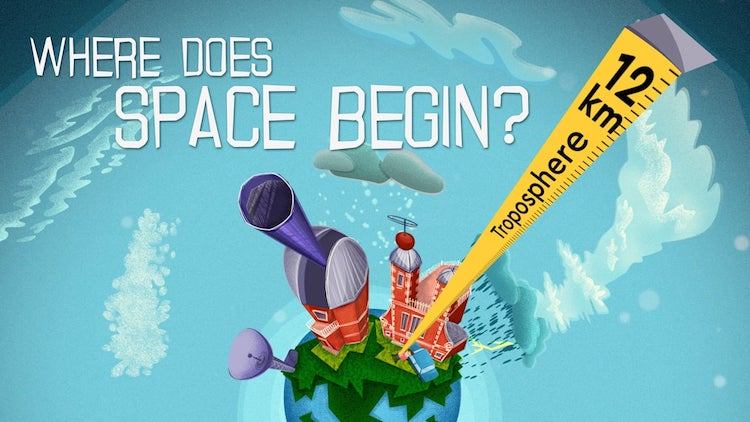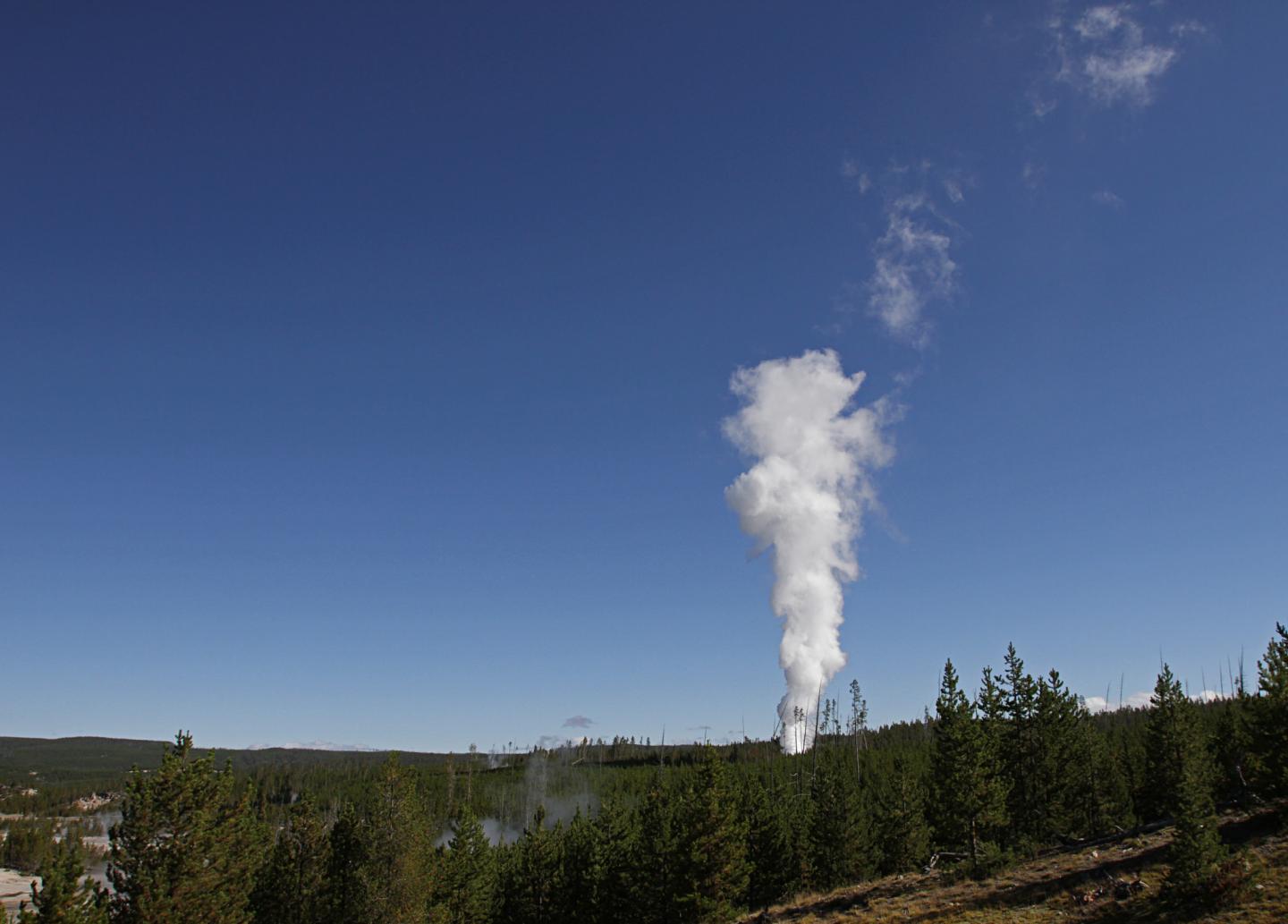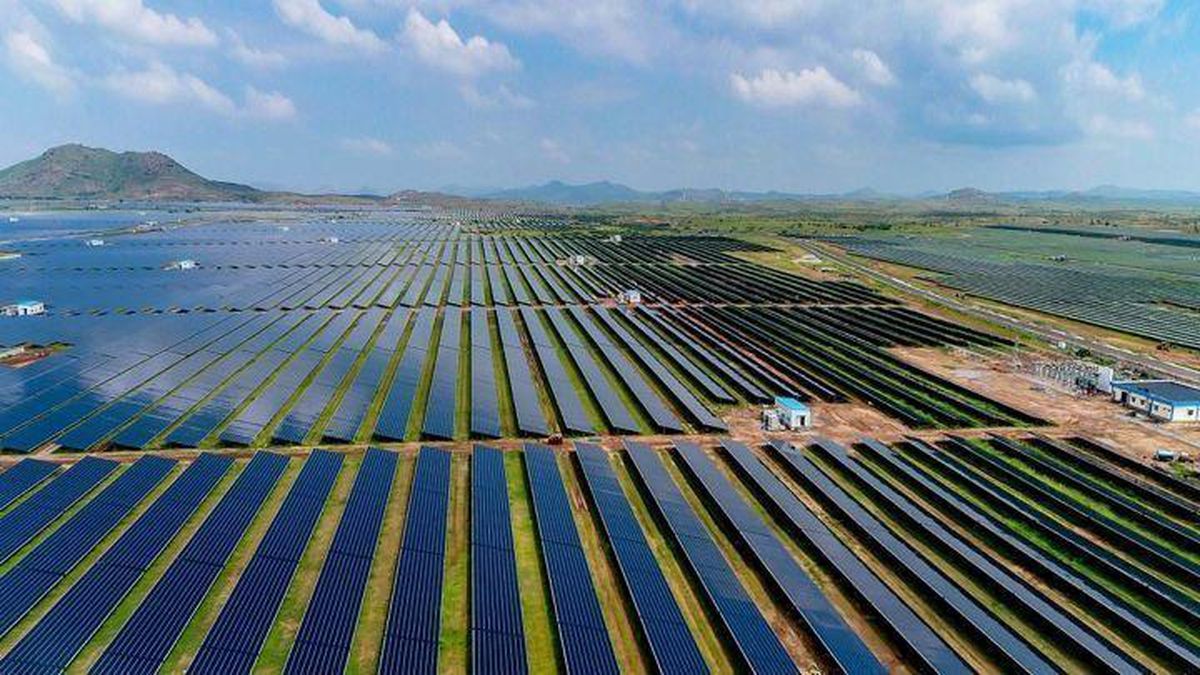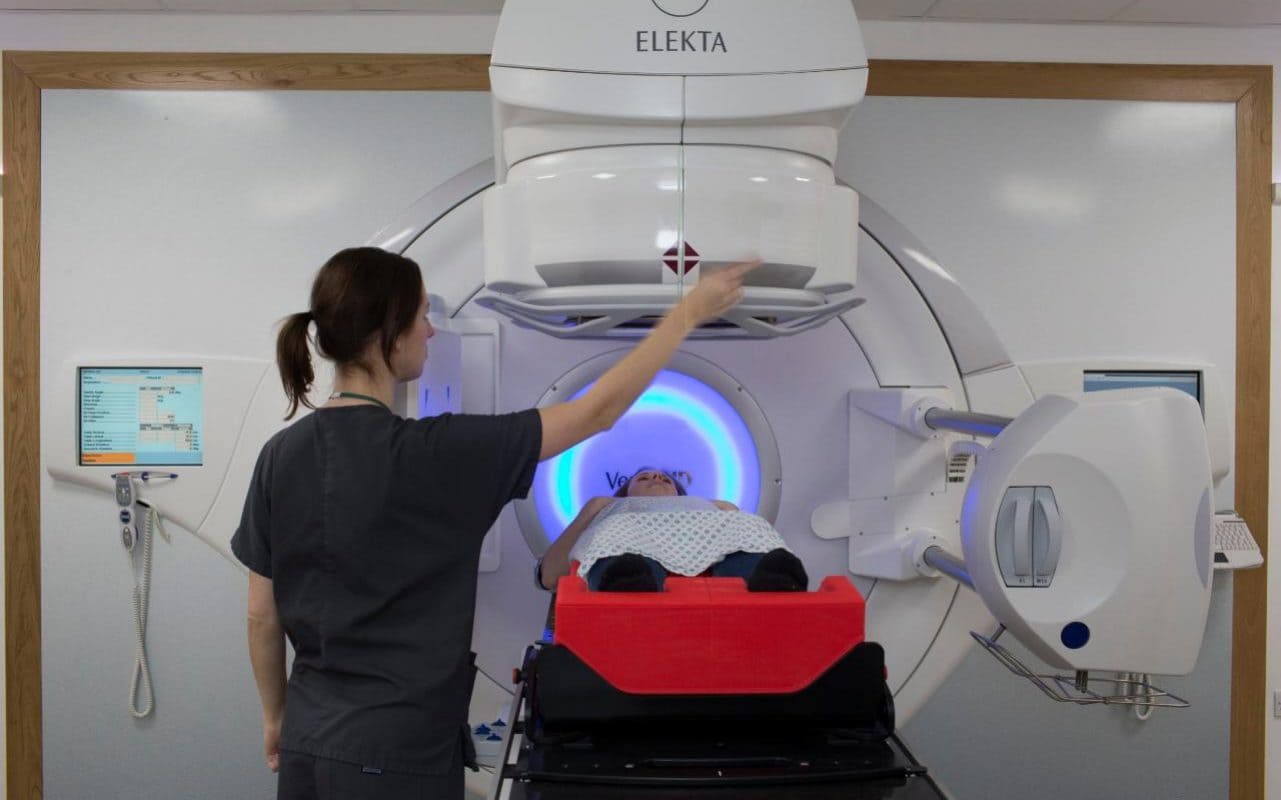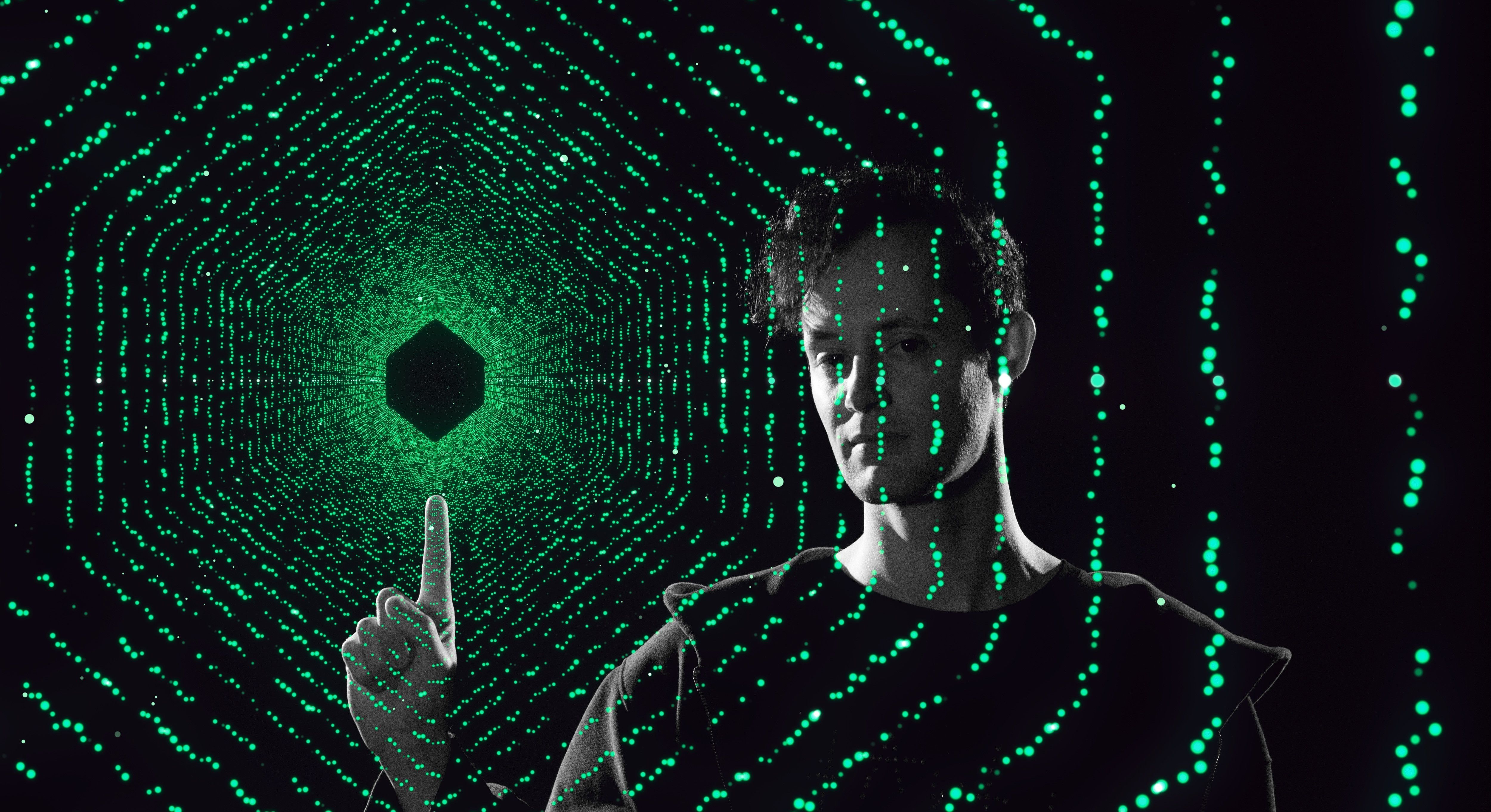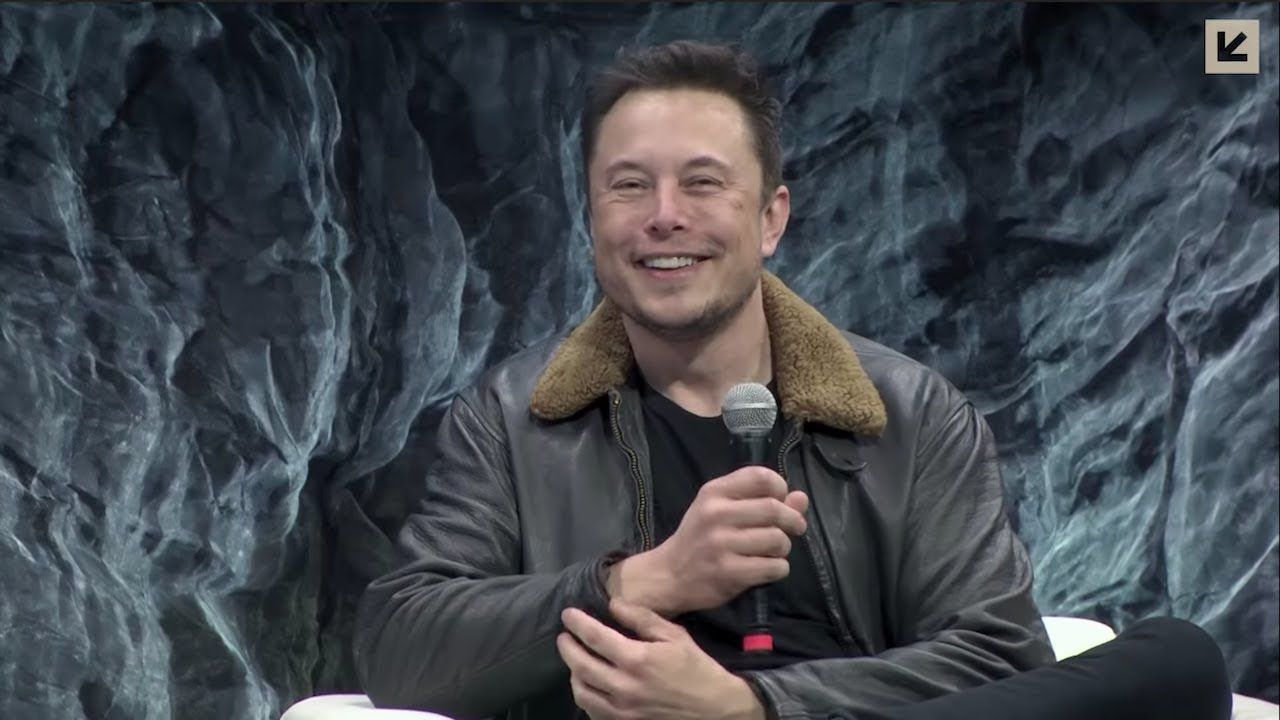Neurotechnology would significantly increase the speed at which information is transferred from humans to machines, and a brain-systems interface may be a requirement to keep up with the pace and complexity of future combat zones.
A handout photo made available by the National Aeronautics and Space Administration (NASA) shows the Soyuz rocket inside Building 112 prior to being rolled out by train to the launch pad at the Baikonur Cosmodrome in Kazakhstan, March 19, 2018. Expedition 55 crewmembers Ricky Arnold and Drew Feustel of NASA and Oleg Artemyev of Roscosmos are scheduled to launch at 1:44 p.m. Eastern time (11:44 p.m. Baikonur time) on March 21 and will spend the next five months living and working aboard the International Space Station (ISS), NASA said.
March 19 (UPI) — Researchers in California have developed a retinal patch with stem cells to improve the vision of people with age-related macular degeneration.
In a clinical trial, researchers at the University of California Santa Barbara implanted the stem cell-derived ocular cells in two patients over the course of 12 months, publishing the results of the study Monday in the journal in Nature Biotechnology.
Macular degeneration, which affects the central, or reading, vision while leaving the surrounding vision normal, usually affects people over 50 years of age. The Centers for Disease Control and Prevention estimates that 1.8 million Americans aged 40 years and older have AMD, and it’s the leading cause of permanent impairment of close-up vision among people aged 65 years and older.
While many of us have a nebulous familiarity with the universe, a very clever animation by the Royal Observatory Greenwich explains the height and purposes of the different layers of the Earth’s atmosphere before it is officially considered to be “space”. These layers include the troposphere, stratosphere, mesosphere, and the Kármán Line. The thermosphere, which continues on and on eventually becomes the exosphere and then on to space as we know it.
Have you ever wondered how far away space is; how far are the different things you see above your head? Join the Royal Observatory Greenwich astronomers as they ascend up through the different layers of the Earth’s atmosphere to reveal what we would see at different heights.
The Royal Observatory also put together an equally clever animation that describes how the solar system was formed.
Wow!
USGS scientists and park staff stress that there’s nothing to worry about in terms of the supervolcano underlying Yellowstone.
“We have zero concerns that anything is happening volcanically,” Stovall said, adding that there hasn’t been a Yellowstone supervolcano eruption in more than 600,000 years. “There’s been geysers erupting through that whole time and that doesn’t mean that anything is happening with magma underground.”
G iving all men with suspected prostate cancer an immediate MRI scan would save thousands of lives a year, the results of a new study suggest.
A trial by British scientists found the comprehensive scan was 12 per cent more likely to detect dangerous tumours than the traditional biopsy, and that the number of men who undergo a biopsy needlessly could be reduced by 28 per cent.
Every year more than 120,000 men in the UK undergo a biopsy, which involves inserting an ultrasound probe into the affected area to take a sample of cells from the prostate that might contain cancer.
You may have heard of Numerai — the unorthodox hedge fund that crowdsources predictive stock market models from data scientists around the world. It is now seeking more brain power and announced today that it is giving away $1 million worth of cryptocurrency to Kaggle users who sign up. The San Francisco-based hedge fund incentivizes its community members by giving them digital tokens they can stake during tournaments to express confidence in their predictions. The best trading algorithms are then selected based on how they perform on the live market, and their creators are rewarded with more tokens.
Looking at most Wall Street hedge funds’ models, it’s fair to say open, collaborative efforts aren’t at their core. Movies like Wall Street, which portrays a greedy Gordon Gekko, and The Wolf of Wall Street, which highlights the derailing decadence of power and money, paint a rather unflattering picture of egocentric traders and financiers. Numerai founder and CEO Richard Craib is looking to change that.
The 30-year-old South African wants to create a more open and decentralized ecosystem for hedge funds. Rather than restricting access to trading data, Craib encrypts it before sharing it with his global network of data scientists, which effectively prevents them stealing and replicating the trades on their own. They can, however, use the shared information to build predictive models for the hedge fund.
Elon Musk has a reputation for pushing the envelop and making bold declarations. In 2002, he founded SpaceX with the intention of making spaceflight affordable through entirely reusable rockets. In April of 2014, his company achieved success with the first successful recovery of a Falcon 9 first stage. And in February of this year, his company successfully launched its Falcon Heavy and managed to recover two of the three boosters.
But above and beyond Musk’s commitment to reusability, there is also his longer-term plans to use his proposed Big Falcon Rocket (BFR) to explore and colonize Mars. The topic of when this rocket will be ready to conduct launches was the subject of a recent interview between Musk and famed director Jonathon Nolan, which took place at the 2018 South by Southwest Conference (SXSW) in Austin, Texas.
During the interview, Musk reiterated his earlier statements that test flights would begin in 2019 and an orbital launch of the full BFR and Big Falcon Spaceship (BFS) would take place by 2020. And while this might seem like a very optimistic prediction (something Musk is famous for), this timeline does not seem entirely implausible given his company’s work on the necessary components and their success with reusability.

